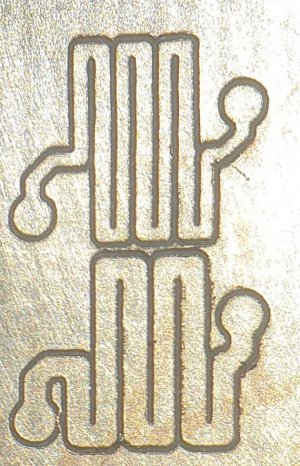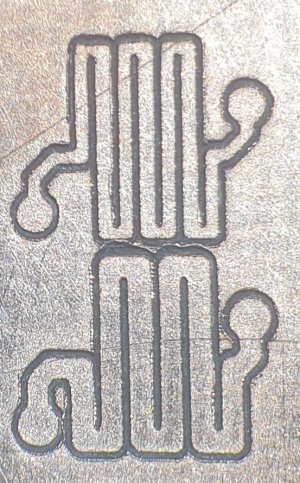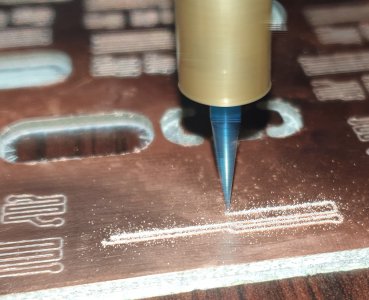I recently acquired a desktop cnc machine and I was both amazed by its positioning accuracy and disappointed with its spindle runout. I'm interested in using it for micromachining of soft materials (brass, aluminium, copper on pcb's) and engraving. Unfortunately the "spindle" is simply a dc motor with a 5mm output shaft and a 5mm to er11 coupler. By careful manipulation it is possible to lower few thou of runout to few tenths (0.015mm) in the er taper, but then the collet settles into up to few thou of runout after few minutes of work.
So I decided to do some experimentation. First I made a tiny boring bar and a holder for it (pictured)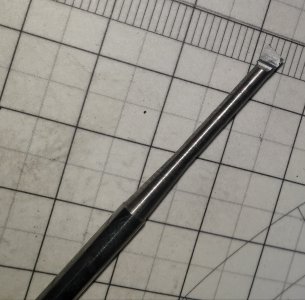
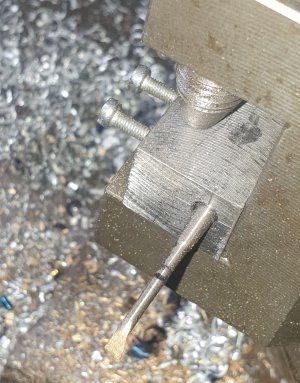
Then I turned the OD of 9mm brass stock to 8mm and polished it to make holding it repeatable. I ended up with a taper under 4 tenths (0.01mm). I then used a Morse 3 collet (runout around one tenth) in my mini lathe and bored very precisely 5mm in one end and 1/8th (3.175) in the other for a fairly tight (manual) push fit.
You can imagine my surprise when I measured 4 tenths(0.1mm) of runout. Still not as good as planned.
So instead I bored out the 5mm hole and the screw to hold the shaft without preparing the OD and I chucked the whole motor with my "adapter" installed into my big lathe chuck. Then I used a bench psu to power the motor and bored the hole in tiny increments like that. (I attempted boring directly on the cnc before, but it wasn't rigid enough).
II ended up with one good one roughly acceptable holders. The 1/8th has under a tenth of runout (0.01mm) 10mm from the holder and 4mm holder has about 3 times that.
At last I have a usable 1/8th holder for pcb milling etc.
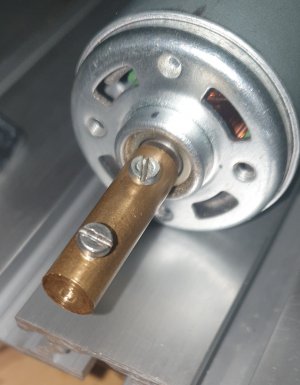
So I'll probably have to remake the 4mm holder.
I'm wondering if there is a way to make one without having to use the motor to do the turning. I imagine my initial failure was because the 5mm hole isn't adequately concentric. Then if I use the spindle itself for boring that compensates for it (the screw ensuring same position each time). Perhaps using an expandable lap and lapping it would be the solution? What do you think?
I can make a tiny expandable lap from aluminium, but I thought to ask first if anyone can comment from experience on what precision I can expect from a two part expandable lap.
I'have some ideas for how to make such a tiny lap, but all involve custom d bits etc. So before I spend days on it I decided to ask here if anyone has any advice to offer or links to any content about such tiny diy laps etc. Buying one unfortunately is uneconomical, because the only manufacturer I'm aware of is in US, and shipping alone would make it not worth it. However if there is a manufacturer of such tiny laps in Eu I would also be very keen to find that out.
Also, I'm considering making a complete miniature spindle with belt drive RC motor for that cnc. This is a different project however and I have to wait for parts to arrive from China before I can start. So I'm trying to improve what I have first.
On a side note, it is amazing that shipping small parts from China can be so cheap while equivalent distance the other way - US is at least two orders of magnitude more expensive. 8
So I decided to do some experimentation. First I made a tiny boring bar and a holder for it (pictured)


Then I turned the OD of 9mm brass stock to 8mm and polished it to make holding it repeatable. I ended up with a taper under 4 tenths (0.01mm). I then used a Morse 3 collet (runout around one tenth) in my mini lathe and bored very precisely 5mm in one end and 1/8th (3.175) in the other for a fairly tight (manual) push fit.
You can imagine my surprise when I measured 4 tenths(0.1mm) of runout. Still not as good as planned.
So instead I bored out the 5mm hole and the screw to hold the shaft without preparing the OD and I chucked the whole motor with my "adapter" installed into my big lathe chuck. Then I used a bench psu to power the motor and bored the hole in tiny increments like that. (I attempted boring directly on the cnc before, but it wasn't rigid enough).
II ended up with one good one roughly acceptable holders. The 1/8th has under a tenth of runout (0.01mm) 10mm from the holder and 4mm holder has about 3 times that.
At last I have a usable 1/8th holder for pcb milling etc.

So I'll probably have to remake the 4mm holder.
I'm wondering if there is a way to make one without having to use the motor to do the turning. I imagine my initial failure was because the 5mm hole isn't adequately concentric. Then if I use the spindle itself for boring that compensates for it (the screw ensuring same position each time). Perhaps using an expandable lap and lapping it would be the solution? What do you think?
I can make a tiny expandable lap from aluminium, but I thought to ask first if anyone can comment from experience on what precision I can expect from a two part expandable lap.
I'have some ideas for how to make such a tiny lap, but all involve custom d bits etc. So before I spend days on it I decided to ask here if anyone has any advice to offer or links to any content about such tiny diy laps etc. Buying one unfortunately is uneconomical, because the only manufacturer I'm aware of is in US, and shipping alone would make it not worth it. However if there is a manufacturer of such tiny laps in Eu I would also be very keen to find that out.
Also, I'm considering making a complete miniature spindle with belt drive RC motor for that cnc. This is a different project however and I have to wait for parts to arrive from China before I can start. So I'm trying to improve what I have first.
On a side note, it is amazing that shipping small parts from China can be so cheap while equivalent distance the other way - US is at least two orders of magnitude more expensive. 8




